Parent-teacher communication in any way is essential and should be strong for a child’s academic success and emotional development.
Communication helps create a partnership that fosters a positive learning experience for the child’s development.
Regular communication between these two parties creates the best environment where parents can support their child’s learning, and teachers can better understand their students’ needs.
In this blog, we’ll see the importance of parent-teacher communication, how it can be improved, its effects and benefits, and some practical examples of effective communication strategies.
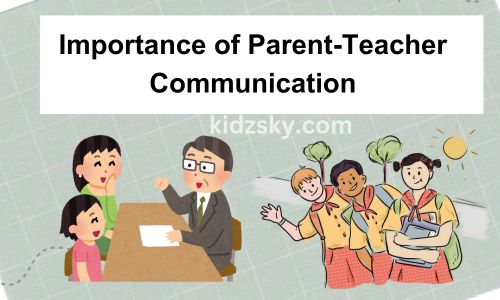
Importance of Parent-Teacher Communication
Parent-teacher communication forms the foundation stone for a child’s growthWhen parents and teachers work in open lines of communication, they can work together to support the child academically and emotionally.
Assertive communication helps in:
- Understanding the Child’s Needs: Every child is different in learning pace, style, and behaviorParents know their kids best, while teachers can provide valuable feedback on their behavior in a school environment.
- Promoting Consistent Support: When parents and teachers communicate regularly, they can offer consistent supportFor example, if a child struggles with reading in school, parents can focus on that area at home, and teachers can adapt classroom strategies accordingly.
- Resolving Issues Early: parent-teacher communication can help identify issues and solve potential issues, whether academic, behavioral, or emotionalEarly intervention prevents minor problems from escalating.
- Building Trust: Regular communication builds trust between parents and teachersThe trust that is built by communication between these two parties starts the basis for a strong partnership and makes parents feel involved in their child’s educationTeachers become more confident in their ability to guide students.
Our Popular Post:- Top 10 Best Physical Games for Kids
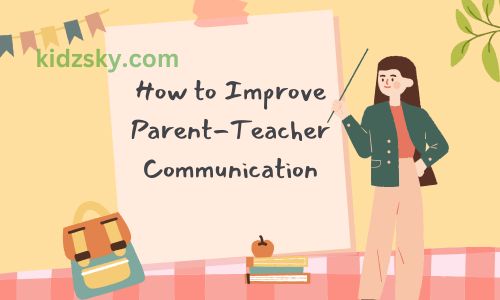
How to Improve Parent-Teacher Communication
Despite the importance of parent-teacher communication, many schools need help maintaining regular and effective interactionImproving communication between school and home or parents and teachers requires the best effort from both sidescheck out some ways to improve it:
- Scheduled Meetings and Conferences
One of the best ways to ensure regular communication is to schedule frequent PTM (parent-teacher meetings) Every month, perhaps every 15 daysThese meetings provide an opportunity to discuss the child’s progress, concerns, and future goalsRegularly scheduled meetings ensure that communication happens in a structured and timely manner.
- Use of Digital Platforms
In the age of technology, many digital platforms can facilitate better communication between parents and teachers. Schools can implement parent portals where teachers upload grades, assignments, and commentsPlatforms like ClassDojo, Google Classroom, and Seesaw allow parents to always stay updated on their child’s progress and communicate directly with teachers.
- Emails and Newsletters
Regular Messages, emails, or newsletters from teachers to parents can keep them informed about upcoming events, classroom activities, and essential updatesPersonalized emails for individual students can also provide more specific information on a child’s performance or behavior.
- Open-Door Policies
Every School should promote or start an open-door policy for communication between school and Parents where parents can approach teachers with questions or concernsThis creates an environment of openness and transparencyWhen parents feel that communication is welcome, they are likelier to stay engaged in their child’s education.
- Parent-Teacher Associations (PTAs)
The formation of a PTA can help parents and teachers communicate effectivelyPTAs provide the best platform for routine interaction, allowing parents to voice their concerns and teachers to give feedback or advice on specific school initiatives.
- Informal Check-Ins
Only some interactions have to be formal meetings. Informal check-ins, like quick email messages, diary notes, or even phone calls, between school or teachers and parents can help maintain consistent parent-teacher communication without formal meetings.
Most Viewed:- How to Create a Nature Easy Scenery Drawing: Step-by-Step 6 Points
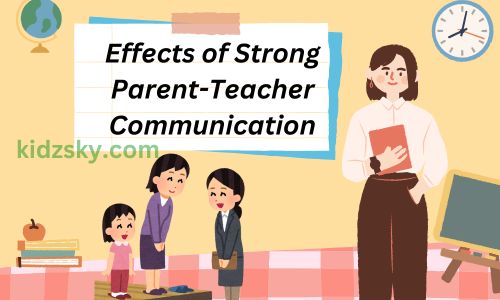
Effects of Strong Parent-Teacher Communication
Effective parent-teacher communication has the best effect, positively impacting the child and the entire learning environment
These are some notable (perfect) effects:
- 1Improved Academic Performance
When parents know their child’s progress daily, they can reinforce classroom learning at homeThis improves homework completion rates, study habits, and overall academic performanceTeachers who regularly communicate with parents can adjust their teaching methods based on feedback, ensuring the student receives tailored support.
- 2Enhanced Emotional and Behavioral Growth
Open communication between parents and teachers ensures that the child’s emotional and behavioral challenges are addressed earlyTeachers can provide parents with strategies to manage behaviors, while parents can share insights that may help in the classroom setting.
- 3Increased Engagement
Students whose parents and teachers communicate regularly are more likely to feel supported at home and in schoolThis results in increased engagement, better attendance, and a more substantial commitment to learning.
- 4Better Parent and Teacher Relationships
When communication is frequent and transparent, the relationship between parents and teachers becomes more positive and collaborativeThis reduces the likelihood of conflicts and misunderstandings and promotes a more supportive environment for the teacher and the child.
Popular Post:- How to Develop Good Eating Habits in Kids

Benefits of Parent-Teacher Communication
Strong parent-teacher communication has countless benefits that extend beyond the immediate classroomSome of these benefits include:
- Increased Parental Involvement
Parents who communicate regularly with teachers are more involved in their child’s educationParental involvement is one of the most significant predictors of academic success, and communication is the key to fostering that involvement.
- Early Identification of Learning Difficulties
Parents and teachers are more likely to identify learning difficulties early on when they communicate regularly. Early intervention is critical for addressing academic challenges such as dyslexia, ADHD, or other learning disorders.
- Holistic Child Development
Effective communication fosters a balanced approach to a child’s development, ensuring that academic and emotional needs are metParents can provide insight into the child’s home life, while teachers can offer guidance on their academic performance.
- Stress Reduction
Parents and teachers who communicate well tend to experience less stress related to the child’s academic progressClear expectations and regular updates eliminate surprises and provide a sense of control over the child’s learning journey.
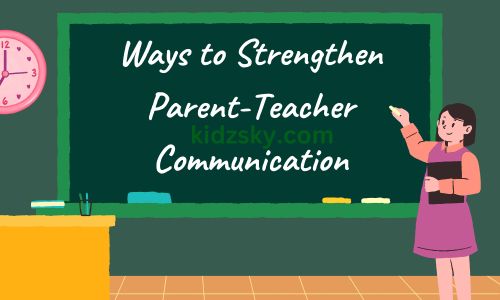
Ways to Strengthen Parent-Teacher Communication
Both sides must prioritize communication to create a thriving partnership between parents and teachersHere are some practical ways to strengthen parent-teacher communication:
- 1Be Proactive
Teachers should proactively contact parents when early signs of academic struggles or behavioral changes occurSimilarly, parents should feel empowered to communicate concerns before issues escalate.
- 2Maintain Consistency
Consistency is keyTeachers should send regular updates, and parents should follow up with questions or concernsEstablishing a routine for communication builds trust and accountability.
- 3Be Open to Feedback
Both parents and teachers should be open to receiving and giving feedback. Constructive criticism, when communicated effectively, can help improve a child’s learning experience.
- 4Respectful Communication
All communication must remain respectful and supportiveConflicts can arise, but maintaining respect ensures that the conversation remains productive.
- 5Use Varied Communication Methods
Not all parents or teachers prefer the same mode of communicationSome may prefer phone calls, while others prefer emails or face-to-face meetingsUsing varied communication methods ensures that everyone stays informed and engaged.
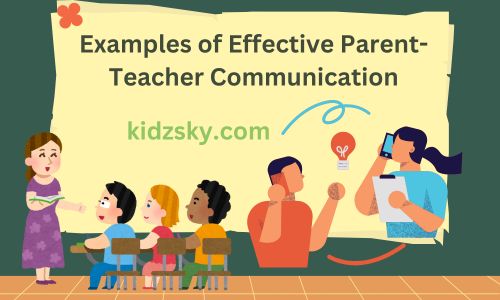
Examples of Effective Parent-Teacher Communication
Here are a few examples of how parent-teacher communication can be implemented effectively:
- Example 1: A teacher sends weekly progress reports via email, summarizing each student’s achievements, areas for improvement, and upcoming activitiesParents can reply with any questions or concerns.
- Example 2: A school uses a parent portal that allows parents to check their child’s progress, assignments, and attendance in real time.
- Example 3: Hold monthly or every 15 days virtual parent-teacher meetings to discuss general concerns & updates on students’ progressThis creates a sense of community and involvement without in-person meetings.
Conclusion
Effective or Perfect parent-teacher communication ensures a child’s or students’s academic and emotional success.
It creates a collaborative environment between these two parties where both parties, parents and teachers, can consistently support the child
Parents and teachers can significantly improve communication through scheduled meetings, digital tools, informal check-ins, and mutual respect. By fostering open, honest, and frequent communication, we can ensure that students thrive in all areas of their development.
Admin creates all Photos used in this blog in Canva.
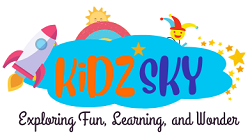



[…] Our Popular Post:- How to Improve Parent-Teacher Communication […]
[…] Our Popular Post:- How to Improve Parent-Teacher Communication […]
[…] Our Popular Post:- How to Improve Parent-Teacher Communication […]
[…] Our Popular Post:- How to Improve Parent-Teacher Communication […]